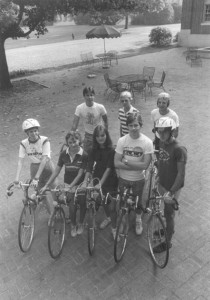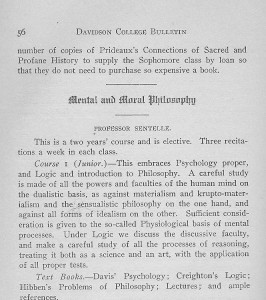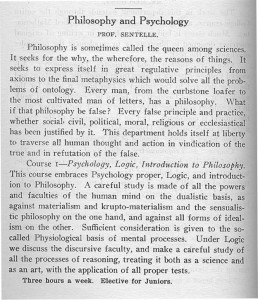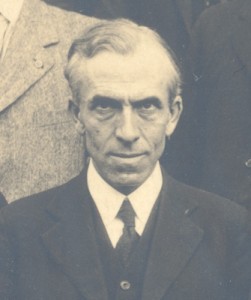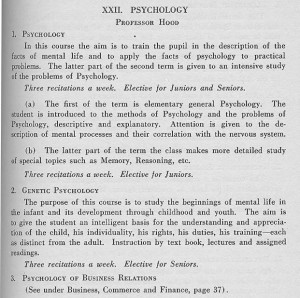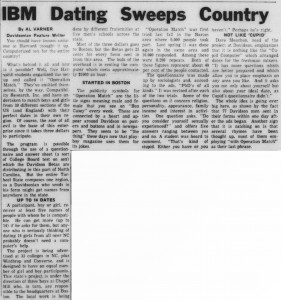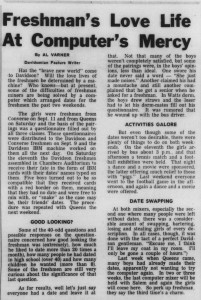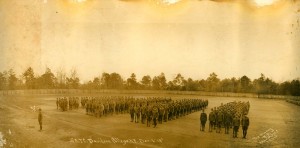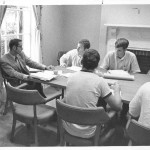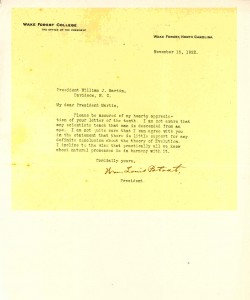What do you remember about your college Physical Education classes? For the less-coordinated of us, team sports may bring back more cringes than smiles – but whatever the reaction, Davidson students have had PE memories since 1908, when the first professorship for PE was established. It was filled by the college physician and chemistry professor John Wilson McConnell, although the actual classes were taught by assistants.
The classes got a boost with a donation given to build tennis courts and an outdoor gymnasium. By 1929, the program had grown sufficiently that students were required to take 4 years of PE. Happily for freshman and sophomores, ROTC work counted as Physical Education, so they could get 2 requirements covered at the same time.
In 1940, the PE department separated from the college physician and health services to become a full part of the Athletic Department. The 1952 catalog describes the college’s approach to Physical Education:
Physical education at Davidson is an integral part of the student’s training. So planned as to include all members of the student body, the program is organized in the form of a pyramid. At the base is the broad required program under which all students must participate in some sort of physical exercise three hours per week. At the next higher level of the pyramid is the voluntary intramural league for average students of average skills. At the apex is intercollegiate competition for students of superior skills.
The catalog goes on to explain that for the “base” level program, students are shifted each quarter through a series activities that included: team games of flickerball, volleyball, basketball, softball, speedball, field hockey, and individual activities such as tennis, golf, swimming, squash, handball, horseshoes, gymnastics, tumbling, table tennis, and archery.
The 4 year requirement lasted until 1956, when it moved to a two year program required of all freshman and sophomores–and no credit for ROTC. Instead students had classes 3 times a week. Freshman faced two team sports and two individual sports plus swimming. Fall semester brought soccer and wrestling; spring semester offered basketball, gymnastics and tumbling. Sophomores could go try out golf, tennis, volleyball, handball, squash, or softball. By the late-1960s, the once a week swimming session had been removed for those who could pass a swimming test and new classes of fencing, canoeing , sailing, and water-skiing were added (thanks of the addition of the lake campus).
In the early 1970s, attendance at PE classes became voluntary. Instead of passing a class, students had to demonstrate proficiency in one team and 4 individual sports. New sports added included scuba diving, snow skiing, and bowling.
The advent of co-education changed the courses offered as well. In 1978, students were required to show proficiency in two team and 3 individual sports. New activities offered (within the limits of Davidson’s staff and facilities on any given semester): senior life saving, water safety instruction, ballet, modern and tap dance, weight training, ice skating, paddle ball, jogging, karate, back packing, rappelling, marksmanship and cycling. To see what classes student can take now visit the PE page, and click on the link for PE courses (I teach PE 255)
The PE pyramid doesn’t show up in the catalog any more, but the college continues to offer a variety of classes, intramural sports and varsity sports and to encourage students to make personal fitness an integral part of college life.

